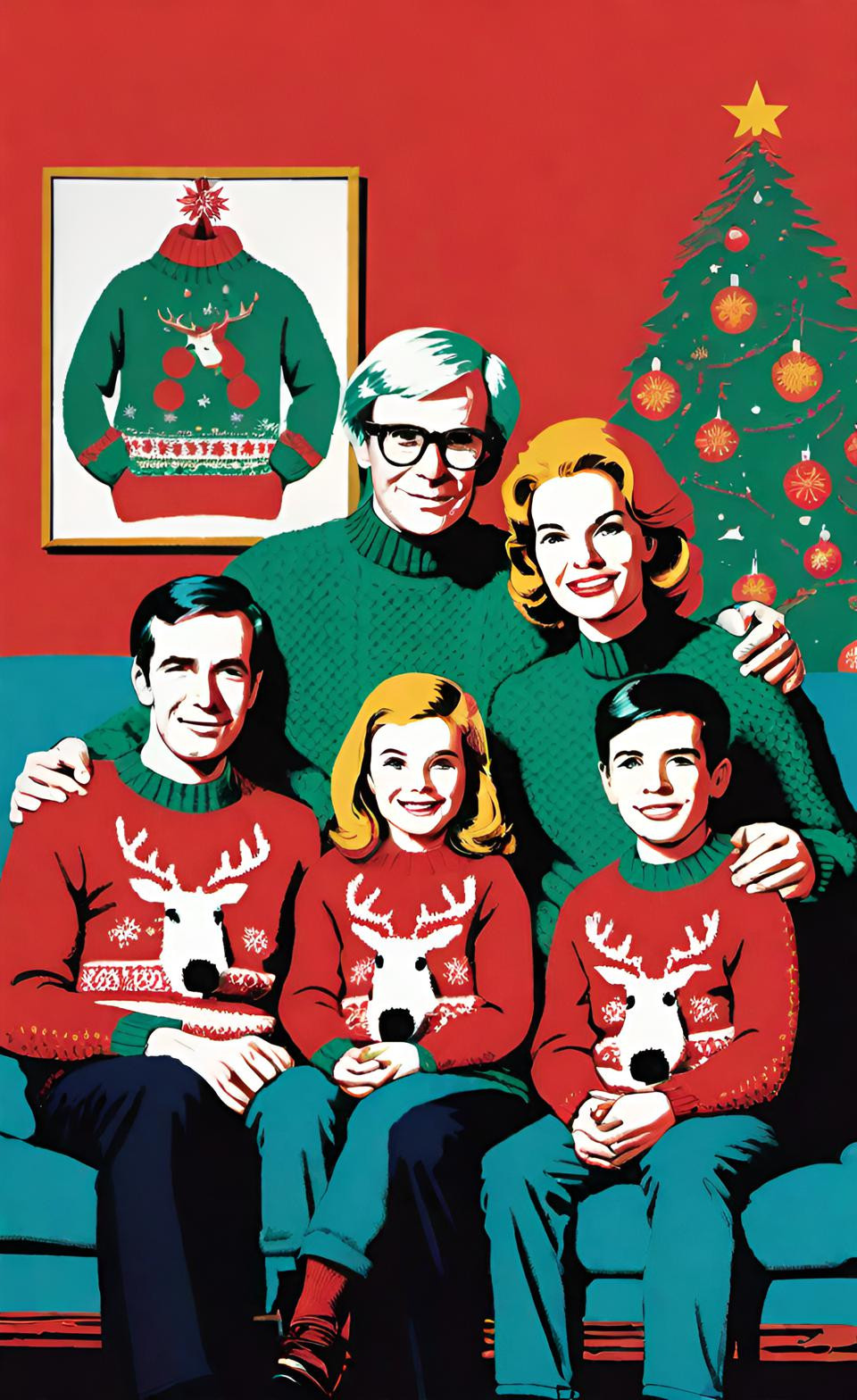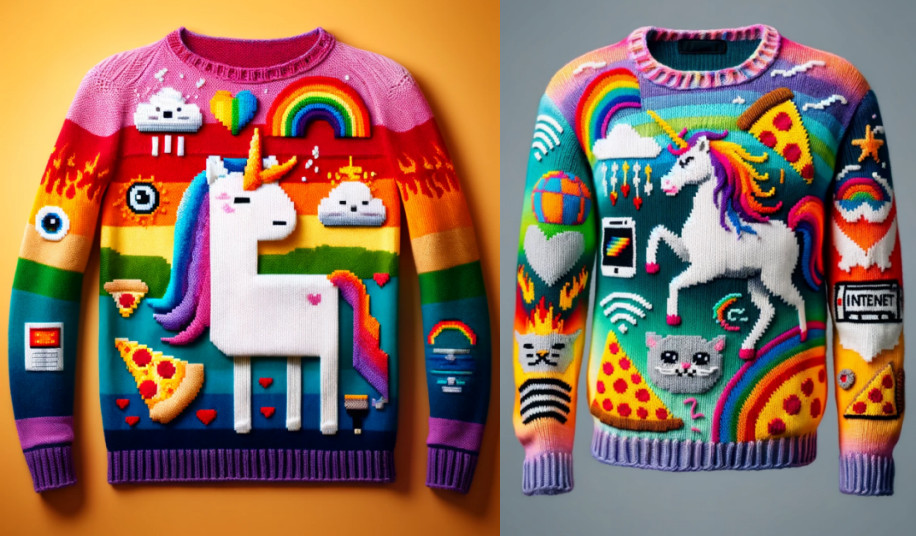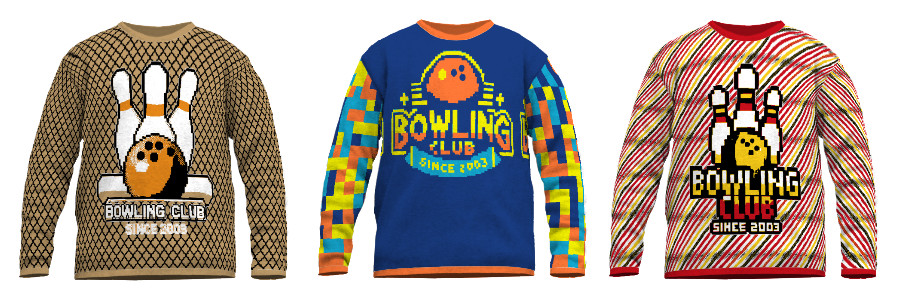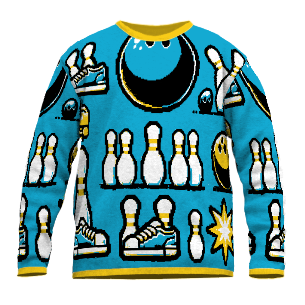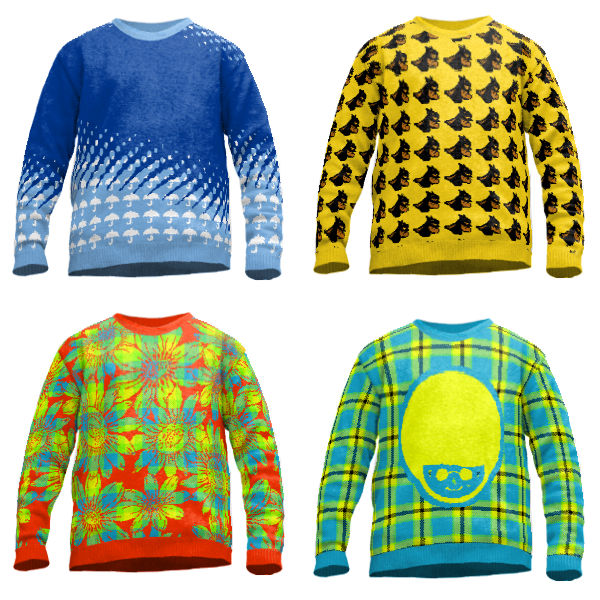‘Tis the season to be jolly… and just a tad ridiculous. That’s right, folks, it’s time to talk about that cherished holiday tradition: the Christmas ugly sweater. But hold onto your santa hats, because we’re about to take this festive fashion faux pas to a whole new level of personalized absurdity.
Picture this: You, lounging by the fireplace, sipping eggnog, wrapped in the warm embrace of a custom-made ugly sweater featuring your own face. That’s right, we’re talking about a sweater so uniquely “you” that it makes your family wonder if you’ve finally lost your marbles along with last year’s tree ornaments.
Our premium poly-knit pullovers and cardigans are here to turn your holiday gatherings into a parade of personalized peculiarity. Want to plaster your team’s logo across your chest? Done. Fancy a jumper with your dog’s face looking more confused than you after your third glass of mulled wine? You got it. We’re here to create the sweatshirt of your wildest, most questionable dreams.
But why stop at just your own ugly sweater? Spread the joy (and mild discomfort) to your entire clan with matching family designs. Nothing says “we’re related” quite like a group of adults willingly wearing matching knitwear with their faces on it. It’s a Christmas card photo waiting to happen – or possibly a reason for your relatives to stage an intervention.
And let’s not forget the office Christmas party. Imagine strutting in wearing a wool blend adorned with your company’s logo, your face, and perhaps a tinsel-draped photocopy of last quarter’s sales report. You’ll be the talk of the water cooler well into the new year.
The best part? These sweaters aren’t just for Christmas. They’re the gift that keeps on giving, all year round. Wear them to summer barbecues, job interviews, or first dates – wherever you want to make an unforgettable impression.
So, whether you’re looking for the perfect gag gift or just want to ensure you’re the center of attention at every holiday gathering, our custom ugly sweaters have got you covered – quite literally, from neck to waist.
Remember, in a world full of ugly Christmas sweaters, be the ugliest. Because nothing says “holiday spirit” quite like a personalized fashion disaster that makes even the elves question their career choices.
Order now, and let’s make this Christmas one for the family photo album – and possibly the fashion police reports.

